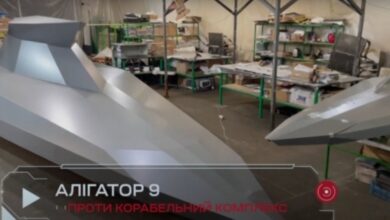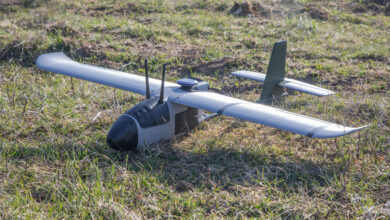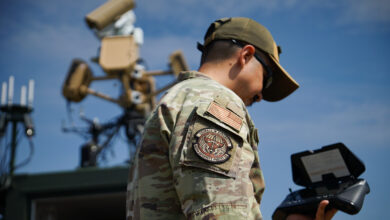China’s FH-95 electronic warfare unmanned aerial vehicle (UAV) passed a “milestone” test last month, according to state media.
The Aerospace Times Feihong Technology Co (ATFTC)-developed UAV completed a performance test at an unknown test base, state-run Global Times reported, citing Beijing magazine Unmanned Vehicles.
The FH-95 has a takeoff weight of one ton and can carry payloads of more than 250 kilograms (551 pounds).
The aircraft can fly for over 24 hours, performing missions including strike, reconnaissance, and electronic warfare in “highly contested battlefield environments.”
China’s domestically developed FH-95 electronic warfare drone passes milestone performance test. Its electronic warfare capabilities will add a new dimension to popular armed reconnaissance #drones, analysts said. pic.twitter.com/kPUrnc3SIz
— Zhang Meifang (@CGMeifangZhang) July 26, 2022
Force-Multiplier
The manufacturer has designed the drone to jam enemy radio, radar, and cellular communications, enabling accompanying UAVs to penetrate and destroy defenses.
Citing ATFTC general manager and researcher Chen Jianguo, Global Times wrote that “drones capable of electronic warfare, reconnaissance, and early warning will become essential in combat as they can conduct remote detection outside the defense area or carry out tactical feints and saturated attacks in coordination with manned aircraft.”
The outlet added that the FH-95 would provide “another dimension” to drone deployment, its electromagnetic warfare capabilities.
Potential Threat to US Military?
The FH-95 is likely to be capable of launching anti-radiation missiles, Janes wrote, adding that the UAV appeared to have been equipped with an FT-8C laser-guided missile, citing images from Russian media.
According to Sandboxx, the drone could pose a threat to the US’s Joint All-Domain Command and Control — which relies on a data network for interconnectivity between different weapons platforms — by jamming the data network that connects different weapon systems from each other.
Especially ominous is the prospect of swarm electronic warfare drones, whereby hordes of small UAVs would saturate an area to disrupt radio, radar, and cellular communications,” the outlet added.
Another Variant Being Tested
The ATFTC — a subsidiary of state-owned China Aerospace Science and Technology Corporation — first flew the drone in 2017 and delivered it to an unnamed client two years later.
The company received its first export order for the drone in 2021, and a new variant of the drone is being flight tested.












